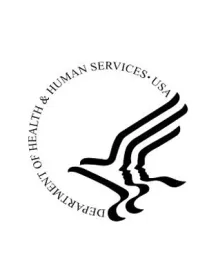It’s summer now, mid-year 2014. Open enrollment for the 2015 health plan year is just around the corner...
We want to make sure that all employers are ready. We want to ensure, as well, that government contractorsspecifically understand the intersection of the Service Contract Act (SCA) with other federal laws.
To be spared penalties for 2015 under the Affordable Care Act (ACA), employers who have 100 or more full-time employees and equivalents (FTEs) should ensure they have identified all their over 30-hour employees and be prepared to offer essential health benefits.
Employers with 50-99 FTEs must confirm they are under 100 and claim the 2015 exemption by certification to the IRS.
In our experience, our client government contractors who perform work covered by the SCA might be confusing how they satisfy their health and welfare fringe benefit obligations (the $3.81 per hour, for ease of reference), in coordination with health care requirements under the ACA, no matter how many FTEs that government contractor might have. Here are just two examples; we find that we are confronting more and more problematic situations, as government contractors are examining their existing practices now and tweaking their health plans, in anticipation of open enrollment in Fall 2015.
Example 1.
For example, the government contractor GovK has 800 FTEs, 400 of whom are covered by SCA. As has been the practice in years past, in 2015 GovK wants to carve out SCA employees from its company health plan and thinks that simply paying the $3.81 cash to them to allow them to buy their own health insurance (but not offering the same health plan that GovK offers to its non-SCA employees, many of whom are highly compensated), is enough to satisfy ACA. While guidance is still forthcoming related to the ACA, GovK – under these facts — cannot provide health care only to those who are highly compensated (this is a test that the health plan must pass). Moreover, under ACA and tax rules, GovK must benefit generally 70 percent or more of all employees (another test).
Example 2.
In another example, GovK agrees to pay the employee share of the health care premium for both its SCA (so the $3.81 is accounted for through the provision of a benefit) and non-SCA workers. At its most basic, this practice is non-discriminatory under tax and health care rules, because everyone gets the same benefit of the company paying the employee share. However, when an SCA (non-exempt or exempt) employee goes out on unpaid leave, GovK stops providing the $3.81 benefit (the SCA employee isn’t working, so GovK isn’t offering the bona fide benefit). . . and GovK stops forwarding the employee share of the health care premium to the insurance carrier. In fact, GovK tries to collect the health premium from the SCA employee.
Yet, when a non-SCA (non-exempt or exempt) employee person goes on leave, GovK continues to pay the employee share of the health care premium; GovK won’t collect from the non-SCA employee. While we would have to examine the facts, it is likely that this practice will favor the more highly compensated employees (and therefore is discriminatory from a tax/health plan sense), who tend to be the non-SCA employees.
Further, without going into more, GovK’s unwillingness to pay the SCA employee’s health premium while that employee is out under Federal Medical Leave Act (FMLA) creates compliance issues under that federal law.
Department of Labor Has Started Investigations of Health Plans.
As helpful as they may be, health insurance brokers tend to know solely SCA well, or ACA well, or FMLA well, but those brokers don’t necessarily ensure that their clients (the government contractor companies) coordinate compliance with respect to all three federal laws. As we see with the brief examples above, compliance with one federal law does not guarantee compliance with (or insulation from) other federal laws.
To underscore the importance of compliance, we note that just last month a DOL investigator has started to evaluate the interplay of these federal laws. We urge government contractor clients to understand that, when dealing with the $3.81 fringe and designing a health plan, they should be mindful of what impacts their operations.



 />i
/>i
